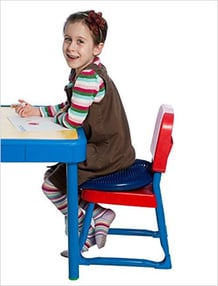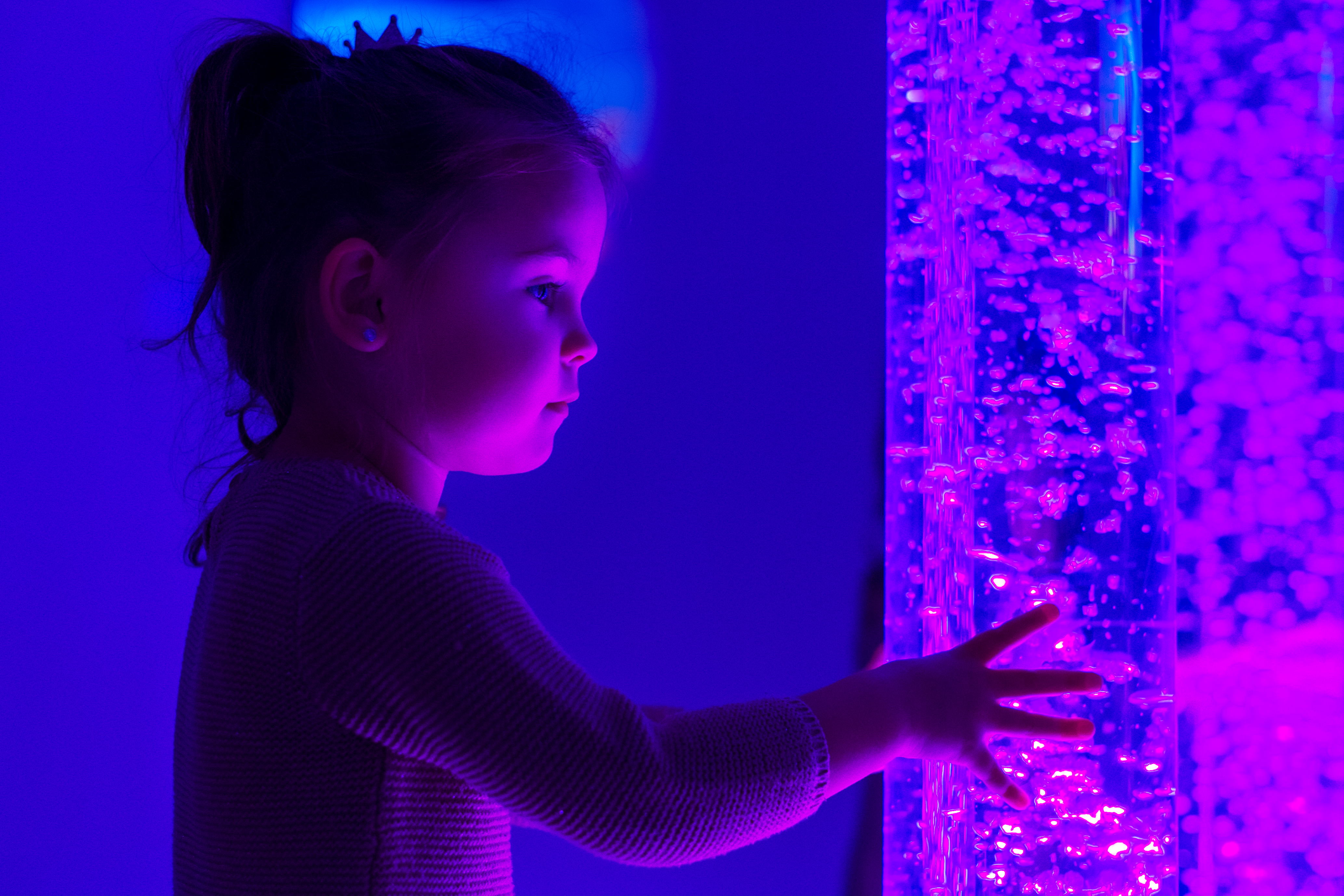Using sensory tools in your practice can provide a more focused, content and alert individual. Whether you are a specialist using ABA, speech and language techniques, occupational therapy interventions or teaching lessons, keeping the sensory needs of your children in mind while using your specific therapy or teaching approach can make the difference between a calm, organized individual and one who is overwhelmed and over stimulated. What often is referred to as a sensory diet, can be implemented by simply keeping a few sensory strategies and tools at your fingertips. Lets take a look at a few elements that can help you apply sensory intervention while working with children with autism, ADHD, special needs or sensory integration dysfunction.

Movement: Using movement to filter out extraneous sensory information is an excellent sensory strategy. Movement helps to calm, regulated, organize and orient the nervous system. Having a ball chair, wiggle cushions, or a balance board in your room can really make a difference in the ability to focus. You can use ball chairs during your specific therapies, while seated at a desk, and balance cushions can be placed on a chair or the floor. Some individuals prefer to stand and a balance board is ideal for those who need to move and stand.
Fidgets: Encouraging kids to move (without disturbing others) can make such a huge impact on their day. Fidget tools are perfect for those situations. Keep a few fidget toys at your fingertips. Using putty, desk fidgets, foot fidgets or gel tools can encourage kids to move their hands. By using a fidget tool, individuals can also strengthen their intrinsic hand muscles and reduce stress as well.
 Seating: Try some alternative seating for your classroom or treatment area. Use floor seats, chair cushions or beanbags for reading, group, individual or floor work and allow kids the freedom to move about. Use alternative seating to meet the needs of your fidgety students or to provide a secure base for those with poor seating habits.
Seating: Try some alternative seating for your classroom or treatment area. Use floor seats, chair cushions or beanbags for reading, group, individual or floor work and allow kids the freedom to move about. Use alternative seating to meet the needs of your fidgety students or to provide a secure base for those with poor seating habits.
Heavy Work: Heavy work goes along with movement but adds a level of resistance that some sensory seekers may crave. Try a mini trampoline, therapy ball, rocking board or cozy canoe in your room for times when your kids need heavy work. You can also keep some resistance bands available so kids can stretch in between or during therapies.
Pressure and Weight: Using a weighted or compression vest, lap pad or weighted blanket can make all the difference in a child’s day. The added weight sends a most calming signal to the nervous system, relaxing the joint and skin proprioceptors. Weight can also be alerting to those with low tone or low affect. Try a weighted lap pad for kids who need a pick-me-up.
Just keeping a few of these tools at your disposal can really impact the effect of your lessons, treatments or sessions.

